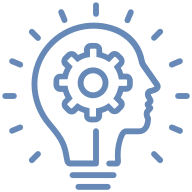What Did You Learn from Overhauling An HR Technology Stack?
To uncover the complexities and lessons learned from overhauling HR technology stacks, we’ve gathered insights from HR professionals, including an HR Manager and a Recruitment Team Lead. While they provide detailed experiences, we’ve also included additional answers to offer a broader perspective. From convincing stakeholders for a new HRIS to integrating tools to simplify workflows, here are key takeaways from their journeys.
- Convince Stakeholders for New HRIS
- Transform Inefficiencies with Cloud-Based HR Platform
- Communicate Clearly to Minimize Resistance
- Plan and Test Data Migration
- Train Users for Effective Implementation
- Choose Reliable Vendors for Long-Term Success
- Integrate Tools to Simplify Workflows
Convince Stakeholders for New HRIS
After starting at Perrin Sportswear, it became immediately evident that we did not have an efficient, robust HRIS. However, I learned that the company had gone through a painful implementation of another HRIS only a few years prior and ended up reverting back to the previous HRIS that they had used for almost 20 years. Many of the HR, Finance, Payroll, and Operations leaders that I would have to try to convince to start another implementation went through that painful experience previously, so I knew I would have to really convince them why it was advantageous to switch systems and how the implementation was going to be different this time around.
I bided my time for the first several months in order to learn the strengths and weaknesses of the current system, resources I had available in the current team, and to develop rapport with the aforementioned leaders. I gained buy-in from my own HR team that would be doing the heavy lifting of the implementation. Once everyone was at least willing to listen, I scheduled a demo with a vendor that I knew was top-of-the-line and would have a lot of bells and whistles to wow folks.
Once they saw what a new HRIS could offer our company and them, they were on board. We completed a full due diligence on many HRISs, selected one after obtaining buy-in from everyone, and implemented it only 4 months later. That was 2 years ago, and the feedback from HR, Finance, Payroll, Operations, and the employees themselves has been great. It was well worth the effort in starting slow and not rushing in like a bull.
Transform Inefficiencies with Cloud-Based HR Platform
Our outdated HR systems were causing inefficiencies, with disconnected tools leading to data silos and manual workarounds.
Overhaul Process:
1. Assessment: We identified pain points and gathered input from HR and other departments.
2. Choosing Technology: Selected a cloud-based, all-in-one HR platform with integration, user-friendliness, and analytics.
3. Phased Implementation: Rolled out payroll and core functions first, followed by recruitment and onboarding.
4. Data Migration: Collaborated with IT to ensure accurate data transfer.
5. Ongoing Support: Provided continuous training and support post-implementation.
Outcome:
Processes became more efficient, employee satisfaction increased, and HR could focus on strategic tasks.
Lessons Learned:
- Engage stakeholders early for buy-in.
- Use a phased rollout to manage transitions smoothly.
- Invest in comprehensive and ongoing training.
- Stay flexible to adapt as needed.
Key Takeaway:
Overhauling our HR technology transformed our operations and reinforced the value of thorough planning, stakeholder involvement, and continuous support.

Communicate Clearly to Minimize Resistance
Clear communication minimizes resistance to change by ensuring that all users understand the reasons behind the overhaul, how it benefits them, and what steps will be taken. It helps build trust and manage expectations effectively. When everyone is on the same page, they are less likely to resist and more likely to cooperate.
Misunderstandings can be reduced if information is shared openly and frequently. Always keep your team informed about key updates and give them a voice in the process.
Plan and Test Data Migration
Data migration requires rigorous planning and testing to ensure that no crucial information is lost and that the transition is as smooth as possible. Pre-migration tests help identify potential issues that could arise during the process. By preparing a detailed plan and carrying out multiple test runs, organizations can avoid unexpected downtime or data corruption.
Addressing issues proactively rather than reactively saves both time and resources. Always have a fallback plan to address any unanticipated problems.
Train Users for Effective Implementation
User training is crucial for smooth implementation because it empowers employees to use the new system effectively from day one. Providing thorough training sessions helps in minimizing confusion and maximizing productivity. When users feel confident in their ability to navigate the new tools, they are more likely to embrace rather than resist the change.
It also reduces the burden on support teams by decreasing the number of user errors. Invest in comprehensive training programs to equip your team for success.
Choose Reliable Vendors for Long-Term Success
Vendor reliability impacts long-term system success, as dependable vendors ensure that the technology functions correctly and any issues are addressed promptly. Reliable vendors provide ongoing support and updates, keeping the system secure and efficient. Choosing the right vendor is as vital as selecting the technology itself.
Vendors with a proven track record and good customer service can greatly influence user satisfaction and overall productivity. Take the time to evaluate your vendors carefully to ensure lasting benefits.
Integrate Tools to Simplify Workflows
Integration with existing tools simplifies workflows by allowing different systems to communicate with each other seamlessly. This connectivity reduces the need for employees to switch between multiple applications, saving time and reducing error rates. When the new technology fits well with the tools already in use, it enhances rather than disrupts productivity.
Seamless integration helps in maximizing the return on investment. Explore compatibility options thoroughly before implementing new technology to make transitions easier.

